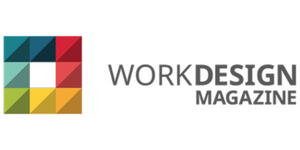- There is no one-size-fits-all digital workplace solution; start with your vision and then choose the platform that will enable you to get the most important tools into people’s hands quickly.
- In addition to providing tools, the experience must foster collaboration, engage people in the culture, and help to keep their careers moving forward.
- To ensure your digital workplace solution flexes with the times, Matt Willmore of Modo shares 3 basic tenets for creating a successful experience.
This article was written by Matt Willmore and was originally published on Work Design Magazine.
The workplace is wherever your employees are. Your digital experience is where you meet them, and it’s about more than space or desk reservations. It’s about making sure people can work productively, keeping workplace culture alive, collaborating in new ways, and fostering career growth, while shifting continually with changing conditions. Your digital workplace experience needs to flex with the times.
In a decade of creating employee and student experiences, Modo has infused its digital workplace and campus app-building platform with learnings from Goldman Sachs, Okta, Freddie Mac, GE, Harvard, MIT and other digital transformation leaders. The basic tenets of successful digital workplace experiences can be distilled into these three areas.

1. Start with a vision and approach it modularly.
Gartner research VP John-David Lovelock recommends, “Companies that recognize there’s an evolutionary path to everything they put in are going to be able to get to that full, human-centric remote work productivity-based utopia; a little bit slower but much more cost-effectively.”
What do you want your employee experience to cover? What’s the most important thing for you to deliver first? How will it work for different people in different locations? Companies with the stickiest branded workplace app experiences map out what they need to deliver and choose a platform that enables them to get the most important tools into people’s hands quickly, and add to their experience over time.
For some, like Goldman Sachs, it means using their Modo-powered ‘Canopy’ workplace app to bring employees in 75 locations into offices safely. For others, like Okta, it’s about using their ‘Atmosphere’ app to foster collaboration and equity in a hybrid environment. And for Schneider Electric, it’s about connecting employees with smart building features through their ‘Engage’ app to create a more people-centric workplace.
Whatever solution you choose for your digital workplace experience should help you execute on your vision, and evolve as you need to. The base of that ability lies in low-code platforms, but it’s important to differentiate between fixed forms and true low-code approaches. Modo’s platform enables sophisticated customization underneath a low-code UI, so organizations can create an experience reflective of their specific needs, quickly. A one-size-fits-all approach is limiting, not agile.
2. Centralize the experience.
43% of workers report spending too much time switching between different tools – up to an hour each day searching for information across different apps. No matter where you are in your digital transformation, your workforce will feel the impact if you bring all of your tools together and make them accessible from a single hub.
While many one-off apps and middleware platforms offer the ability to integrate systems and web apps like these, the tools they provide are often limited, making the task difficult and the results disappointing. Modo provides out-of-the-box (productized) integrations for many commonly-used enterprise apps and tools, as well as HID, smart buildings and more, resulting in a centralized, holistic digital experience of the workplace. You can cut through the ‘search/download/switch’ frenzy with the right platform.Deliver a digital headquarters for your organization, where people can access not only new tools for hybrid work like desk reservations, health attestations, collaboration tools and navigation, but enterprise systems like Jira, Office 365, IT ticketing, Zoom, Slack, Teams and more.
3. Put people first.
Two years of moving back and forth between in-office, remote and some form of hybrid work has driven significant shifts that have made retention a critical priority. Research shows that people need more than productivity tools to stay engaged. The digital workplace experience must also foster collaboration, engage people in the culture, and keep their careers moving forward.
The Modo platform provides capabilities that drive collaboration, letting people sync in-office schedules and seating with colleagues and friends, and access virtual spaces for scheduled or drop-by meetups. Robust personal profiles with opt-in flexibility connect people to each other through interest groups, social sharing, gamification and challenges. In-app onboarding engages them in your digital HQ from the get-go, while dashboards that show their progress, forums for employee recognition and reminders that nudge behaviors keep careers on track.
Most importantly, Modo’s platform enables organizations to deliver experiences specific to locations and persona, so each individual gets notifications, information, tools and services that are relevant specifically to them.
In a time of accelerated digital transformation, enterprises are seeking and sharing learnings like never before. To support the delivery and evolution of your digital workplace experience, Modo offers starter kits, launch plans, design templates and sample code, adoption acceleration, tech support, integrations, and full customization. And our extended community opens you up to experiences from those paving the way.


 Dr. Gleb Tsipursky – The Office Whisperer
Dr. Gleb Tsipursky – The Office Whisperer Nirit Cohen – WorkFutures
Nirit Cohen – WorkFutures Angela Howard – Culture Expert
Angela Howard – Culture Expert Drew Jones – Design & Innovation
Drew Jones – Design & Innovation Jonathan Price – CRE & Flex Expert
Jonathan Price – CRE & Flex Expert













